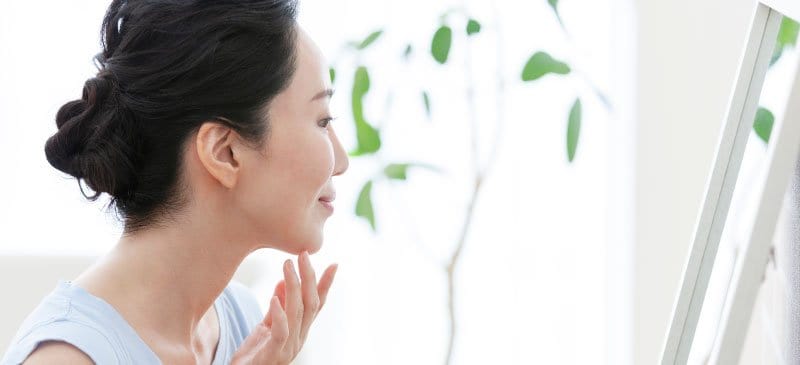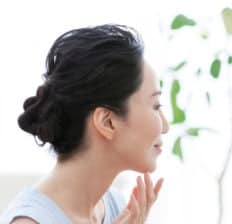This Dr. Axe content is medically reviewed or fact checked to ensure factually accurate information.
With strict editorial sourcing guidelines, we only link to academic research institutions, reputable media sites and, when research is available, medically peer-reviewed studies. Note that the numbers in parentheses (1, 2, etc.) are clickable links to these studies.
The information in our articles is NOT intended to replace a one-on-one relationship with a qualified health care professional and is not intended as medical advice.
This article is based on scientific evidence, written by experts and fact checked by our trained editorial staff. Note that the numbers in parentheses (1, 2, etc.) are clickable links to medically peer-reviewed studies.
Our team includes licensed nutritionists and dietitians, certified health education specialists, as well as certified strength and conditioning specialists, personal trainers and corrective exercise specialists. Our team aims to be not only thorough with its research, but also objective and unbiased.
The information in our articles is NOT intended to replace a one-on-one relationship with a qualified health care professional and is not intended as medical advice.
What Are Whiteheads? Plus How to Get Rid of Them Naturally
May 29, 2021

Whiteheads aren’t pretty, and most people make sure to “pop” them before showing their faces in public. Although they are very similar to blackheads, there’s something about whiteheads that make us all avoid them however possible.
Luckily, there are natural ways to prevent whiteheads or treat them if they’re already occurring. Age-old remedies for acne do work, like cleansing your skin and improving your diet.
There also are natural topical treatments that can help you avoid popping those whiteheads altogether.
What Are Whiteheads?
Whiteheads are comedones that are closed and occur when oil develops beneath the hair follicle opening. They have a white or yellowish head because air doesn’t enter the closed comedo (or single lesion), so the oil and bacteria buildup remains a whiteish color.
An open comedo, on the other hand, is a blackhead because the skin pigment melanin reacts with oxygen in the air and turns it black or dark brown.
If oil builds up in a whitehead, it’s likely to cause an increase of bacteria, which can lead to inflamed lesions or pimples. Acne that’s inflamed and filled with yellow pus are called “pustules.”
Whiteheads can appear on your face, especially your T-zone, as well as your chest, back and shoulders. Any age group can experience whiteheads, especially during certain life phases that alter oil production.
Related: How to Get Rid of Nodular Acne
Causes
What causes whiteheads? The main cause of whiteheads is the buildup of keratin (a protein found in skin), oil and bacteria because of a blocked or clogged pore.
This blockage usually occurs due to an increase of oil production or because dirt, grime and bacteria sit on the face and clog pores.
When sebum, your body’s natural oils, mix with dirt and debris — which can be from makeup, the environment, sunscreen or any other substance that comes into contact with your skin — it can form a plug that clogs the pores and causes a blemish.
Increased oil production is common during puberty, menstruation and pregnancy, which explains acne flare-ups during these times.
Other factors that can cause whiteheads include:
- environmental/air pollution
- poor diet
- friction and irritation to skin
- skin care products
- poor hygiene/face washing
- smoking
- chronic stress
Related: Alpha Hydroxy Acid for Exfoliation, Wrinkles, Acne & More
How to Get Rid of Whiteheads Naturally
1. Wash Your Face Twice Daily
To avoid clogged pores, cleansing your body and face with a gentle cleanser is essential. Avoid harsh skin care products that contain chemicals, as these can trigger breakouts and skin irritation.
Cleansers containing natural, soothing ingredients, like jojoba oil, olive oil, tea tree essential oil and honey, remove buildup from makeup and pollutants. You should wash your skin morning and night.
You can also try double cleansing, which involves washing your face with an oil (like jojoba) first and then following up with a gentle cleanser.
2. Exfoliate One to Two Times Per Week
Using a gentle exfoliator one to two times per week reduces dead skin cells and allows for new cells to emerge. Not only does this promote the overall health of your skin, but it helps clear your pores and prevent whiteheads from emerging.
Make sure not to use a harsh exfoliator or scrub roughly because it may cause skin irritation and make whiteheads worse. The point is to gently scrub away dead skin cells and buildup on the skin.
3. Use a Natural Moisturizer
A natural moisturizer like jojoba, olive oil or shea butter serves as a protective barrier for your skin and helps balance sebum production. It also balances skin hydration levels and reduces the accumulation of dead skin cells that can lead to pore blockages.
4. Spot Treat with Tea Tree Oil
Research indicates that applying tea tree oil to areas of concern can significantly improve mild to moderate acne. Tea tree oil for acne has impressive antibacterial properties.
A great recipe for spot treatment areas of whiteheads or lesions is combining 12 drops of tea tree essential oil with two tablespoons of pure aloe vera gel and a half teaspoon of argan oil. You can use a clean cotton ball to apply this mixture to acne-prone areas, or apply it to your entire face, and then rinse with warm water.
5. Take Probiotics
Did you know that your gut health and balance of good vs. bad bacteria can actually play a role in skin health and acne? Taking probiotics has proved to reduce acne severity because of its ability to improve the healthy balance of gut bacteria and promote better gut integrity.
6. Try Topical Retinoids
Retinoids are a group of vitamin A-containing compounds that regulate epithelial cell growth and help improve skin health.
Studies show that topical retinoids are an effective remedy for improving acne. Retinoic acid is viewed as the best comedolytic agent, meaning that it’s known to reduce whiteheads and blackheads.
7. Avoid Inflammatory Foods
It’s not necessarily that greasy foods cause whiteheads, but foods that trigger inflammation can trigger acne flare-ups. Inflammation in the skin, which is caused by foods containing refined sugars, can clog pores and cause whiteheads.
On the other hand, eating clean, whole foods helps keep your skin hydrated, helps you to get rid of pimples and improves your overall appearance.
8. Avoid Touching Your Face
If you commonly rest your chin of your palm or touch your face throughout the day, this may promote breakouts. Your hands can transfer bacteria to your face and pores, leading to whiteheads, blackheads and even infections.
Many people wonder whether or not to pop their whiteheads. Be aware that popping a pimple can cause increased inflammation and redness, but if the whiteheads can be easily opened, it may allow for the oil to be removed and the area to begin healing.
The best way to pop a whitehead on your nose, face or any area of your body is to hash your hands, use a clean Q-tip to press down on the area and allow the oil to come out. If it doesn’t come out easily, leave it alone and continue to spot treat with tea tree oil.
Risks and Side Effects
If you don’t find positive results after using natural remedies for whiteheads or acne, consider visiting your dermatologist. If any of these treatments cause skin irritation, such as redness, itchiness or stinging, discontinue use immediately.
Conclusion
- Whiteheads are caused by serum and dead skin cells that clog the pores and create white or yellow bumps.
- They are generally triggered by increased oil production, which occurs with puberty, menstruation and pregnancy. They may also worsen with stress, poor diet and poor hygiene.
- Whiteheads can be prevented or improved with simple natural remedies, including cleansing your skin twice daily with a gentle cleanser, exfoliating one to two times per week, avoiding inflammatory foods, taking probiotics, and using topical treatments like tea tree oil and retinoids.


